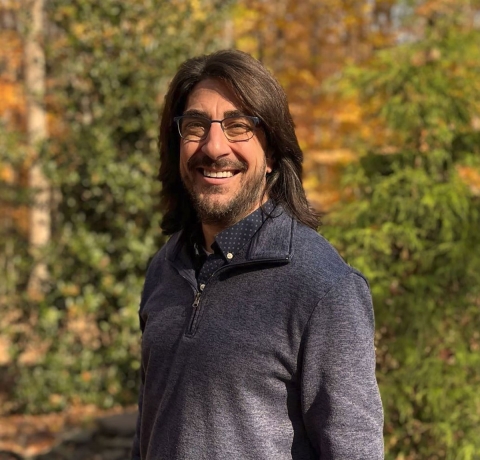Message from Dave Miko
Assistant Director, Fish And Aquatic Conservation
The Fish and Aquatic Conservation program is continually looking ahead, because we recognize that the challenges of today are the opportunities of tomorrow. For over 150 years, we've embraced this ethos, consistently learning from past experiences to inform future endeavors. Guided by the best available science and strengthened by our expanding ecosystem of partnerships, we are working toward a future defined by resilient habitats, healthy and abundant fish and aquatic wildlife populations, and communities that are free to enjoy the benefits of the natural world without barriers.
We remain committed to that future, even in the face of a dramatically shifting climate. Navigating changes in water temperature and flow, habitat fragmentation, and species loss will demand the use of our Service values of stewardship, integrity, respect, collaboration, and innovation. In this year's annual report, we share some perspectives from both headquarters and field staff, shedding light on how climate change climate change
Climate change includes both global warming driven by human-induced emissions of greenhouse gases and the resulting large-scale shifts in weather patterns. Though there have been previous periods of climatic change, since the mid-20th century humans have had an unprecedented impact on Earth's climate system and caused change on a global scale.
Learn more about climate change impacts the programs they champion and the transformations they witness firsthand. You’ll read about pioneering partnerships to improve fish passage fish passage
Fish passage is the ability of fish or other aquatic species to move freely throughout their life to find food, reproduce, and complete their natural migration cycles. Millions of barriers to fish passage across the country are fragmenting habitat and leading to species declines. The U.S. Fish and Wildlife Service's National Fish Passage Program is working to reconnect watersheds to benefit both wildlife and people.
Learn more about fish passage , essential outreach work building trust with marginalized communities, the evolving operational landscape of hatcheries as they respond to climate-induced threats, and the challenges we face as climate change allows invasive species invasive species
An invasive species is any plant or animal that has spread or been introduced into a new area where they are, or could, cause harm to the environment, economy, or human, animal, or plant health. Their unwelcome presence can destroy ecosystems and cost millions of dollars.
Learn more about invasive species to exploit newfound habitats. We share these perspectives because they represent our greatest asset – the passionate and innovative staff of the Fish and Aquatic Conservation program.
In 2023, our collaborative efforts yielded significant milestones
- The National Fish Passage Program removed 118 barriers to reconnect over 2,200 miles of aquatic habitat
- Fish and Aquatic Conservation Offices conducted hundreds of populations assessments and restored 24 thousand acres of habitat to benefit aquatic species
- National Fish Hatcheries released 126 million fish to directly support heathy fisheries, bolster recreational economies, and honor our Tribal trust responsibilities
- Hatcheries and conservation offices welcomed nearly 1 million visitors, while our outreach efforts reached over 27,000 children
I extend my heartfelt gratitude to the dedicated team of over 1,200 permanent, term, and seasonal employees nationwide who comprise the backbone of our conservation work. Thanks to their unwavering commitment, we are steadfast in our mission to ensure that America's fisheries remain among the most abundant and diverse in the world. You can explore more examples of the work we are doing to meet the challenge of climate change in the complete report.
Uncharted Waters: Building Resilience in the Face of Climate Change.
-Dave Miko
Assistant Director, Fish And Aquatic Conservation
Explore Past Reports
2022 Fish and Aquatic Conservation Annual Report - Confluence: Connecting Partners and Conservation
2021 Fish and Aquatic Conservation Annual Report - An Enduring Legacy of Conservation




